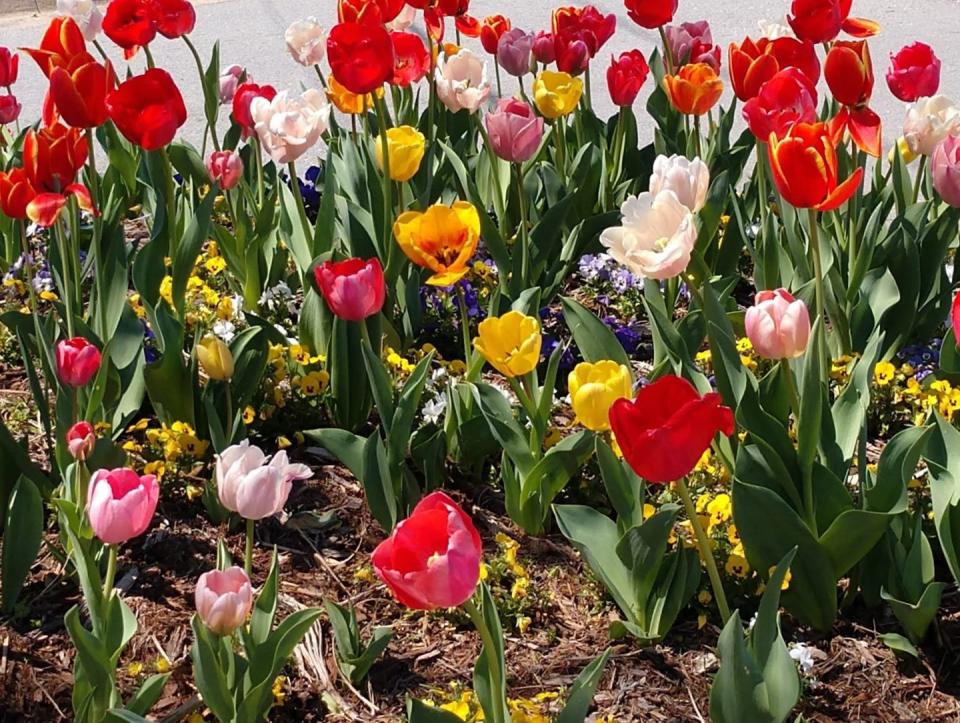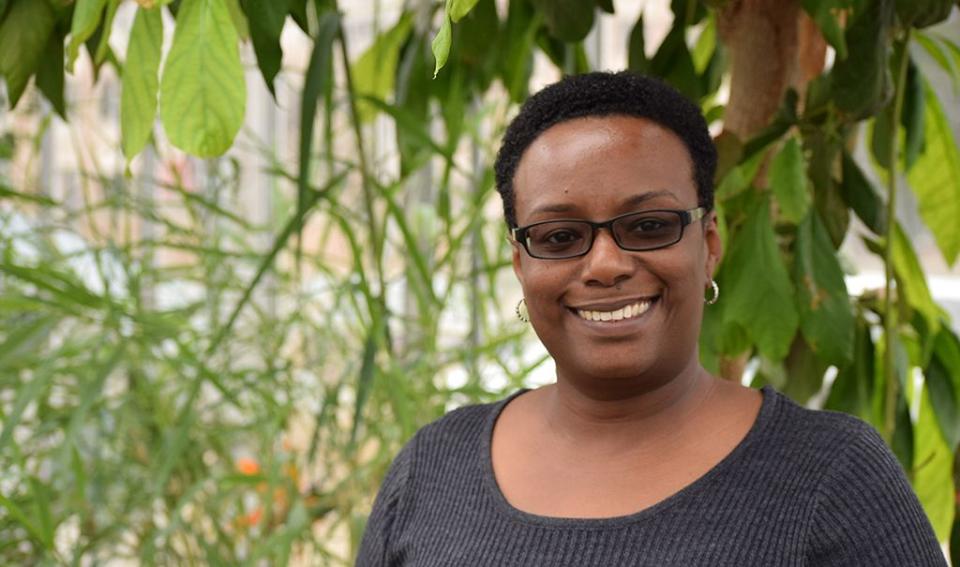Plants Were My Beacon of Hope During the Pandemic

I planted tulip bulbs in November of 2019. I distinctly remember the process and timing of planting these bulbs. My father had died the month before and each bulb I placed in the ground was moistened by both fertilizer and my tears.
Even though I was suffering from the debilitating grief of having lost my father a mere few weeks after his unexpected diagnosis of stage four pancreatic cancer, there was only a brief window of time that I could plant the tulip bulbs. I’m a biochemist and molecular biologist with a specialty in investigating how photosynthetic organisms sense their external environment and the biochemical processes they use to respond accordingly—in a nutshell my career is about studying plants.
So I knew the bulbs needed to be planted after the temperature had dropped to allow the bulbs to root but not grow. Yet I also knew I had to get them in the ground before deep frost set in, when the ground would freeze making planting and rooting impossible. So I planted bulbs along with my tears and continued my slow walk through the grief process.

In early 2020, I was still struggling with intermittent days of crippling grief. But I had started to do what I knew my father would want me to do: reembark on frequent travel to give talks on science, leadership, and cultivating equity across the U.S. and abroad. I soon forgot about the bulbs and tears I’d planted months before.
Just when I was truly getting back in the groove of work and travel, I was grounded in mid-March as travel abruptly stopped due to the global spread of coronavirus. My usually busy life became restricted to the walls of my home. Daily, I moved between screens with endless Zoom meetings in my office, to my writing space, to the “after work” space of the family room and hastily constructed home gym at the end of a workday. On the rare occasion that I ventured out for essentials, it was a tense excursion. I attempted to limit the time I was out in public spaces with others such as the grocery store or pharmacy.
In the initial weeks of grappling with the potential risks of the virus, I spent limited time outside until ultimately I embraced the importance of socially distanced, consistently masked times outside in nature. While entering and leaving home, one day I noticed the green leaves of the bulbs I’d planted after my father’s death peeking through the mulch.

These leaves were a stark reminder that spring had snuck up on me. I usually await its arrival with bated breath because I simply love spring: the colors, the scents of flowers, the songs of birds who have returned from winter retreats.
I also love the newness that characterizes the season. As leaves emerge on trees and bushes, I eagerly make note of and marvel anew at buds revealing their inner leaves each spring, followed by the young leaves unfurling, and ultimately the reestablishment of full foliage. In years prior, this sequence of organisms that had been in deep rest through winter resuming their vigorous lives always sparked deep hope in me. Hope for the realization and fulfilment of the goals, dreams, and purpose that can always reemerge from a state of rest.
Indeed, spring plants had always annually served as a powerful beacon of personal hope. But the spring of 2020 was decidedly different, and I greeted the season more with fear and uncertainty than hope. It was my first spring without my beloved father and the first since the arrival of COVID-19. This confluence of the loss of the beloved and familiar with the arrival of the unfamiliar and terrifying completely overwhelmed me most days.
Yet every time I stepped outside, the bulbs reminded me that despite the challenges of loss of life for me personally and for us all globally, plant life was tracking on. The bulbs continued to push bravely through the soil after winter just as they had in years past. And although these plants were persisting on their purpose, spring was not the same for me, nor my neighbors.

My generally vibrant neighborhood was eerily silent. I rarely encountered a neighbor during my strolls. When I did come upon another person—at least for the first few weeks—we took a wide berth of each other, attempting to maintain our neighborly connections with new constraints. I assume that we all smiled at each other, but it was difficult to confirm. I offered vigorous waves in the attempt to stay connected.
As the loss of life in the U.S. and abroad due to the spread of the virus continued to soar, I was fighting deep uncertainty often veering greatly into fear and verging precipitously on hopelessness. In the face of these challenging emotions and period of forced reclusion, I continued to take in the emergence of new leaves of the tulips, followed by the flower buds. I was drawn to them because they had been first watered with the tears linked to my memories of my father. But their undeterred maturation also reminded me that spring—indeed life itself—was moving on. As these plants grew vigorously, I began to draw hope from their seemingly undeterred commitment to pursue their purpose.
As I drew strength from this annual pursuit, I began to see additional evidence of plants serving as hope and inspiration for many others. Neighbors and friends whom I’d never known to nurture houseplants or gardens were planting and growing plants of all types. They germinated plants from seeds, grew plants such as green onions and lettuce from kitchen scraps, and shared their joy and intrigue with cultivating these beings.

I watched flower and vegetable gardens pop up in yards that had never served as plant havens. Personal friends, social media connections, and sometime strangers sent me pictures of thriving houseplants and vegetable gardens because they knew I’d be their biggest cheerleader when things went well. I also received pictures of yellowing plants and plants with other clear challenges with a plea for help. These plants, and their caretakers, were in need for what one of my closest friends called a “plantervention.” It seemed to me that plants—in homes and gardens alike—were nurturing much needed human connection and often leading to a collective source of hope.
Now spring 2021 has officially arrived. Just as in spring seasons past, plants are emerging anew, birds are returning in song, the scent of spring flowers imbues the air, and so much more. In the face of the hope fostered by the successful development of vaccines to provide protection through boosting the body’s immune system, I am so much more optimistic this spring. I eagerly began to count down the arrival of the first day of the season weeks ago.
This hope also is very much centered on the personal. I started actively planning for the day when I can see and hug my mother for the first time since we spent our first Thanksgiving without my father in 2019. Hugs from her always goes on just a little longer than I think they will and end with just a slightly deeper grasp before release—an embrace I used to take for granted. I know I’ll be the one holding tight and for an extended period this time.
I’m just now starting to see the hopeful emergence of leaves from my tulip and lilac bulbs this spring and, this year, it completely parallels my hope that we are emerging from the pandemic. My greatest hope in this moment is that we take the lessons we have learned boldly forward into a renewed and hope-filled future. As we emerge from this winter of pandemic life may we be like plants, carrying on with fierce determination and relentless purpose.
You Might Also Like

